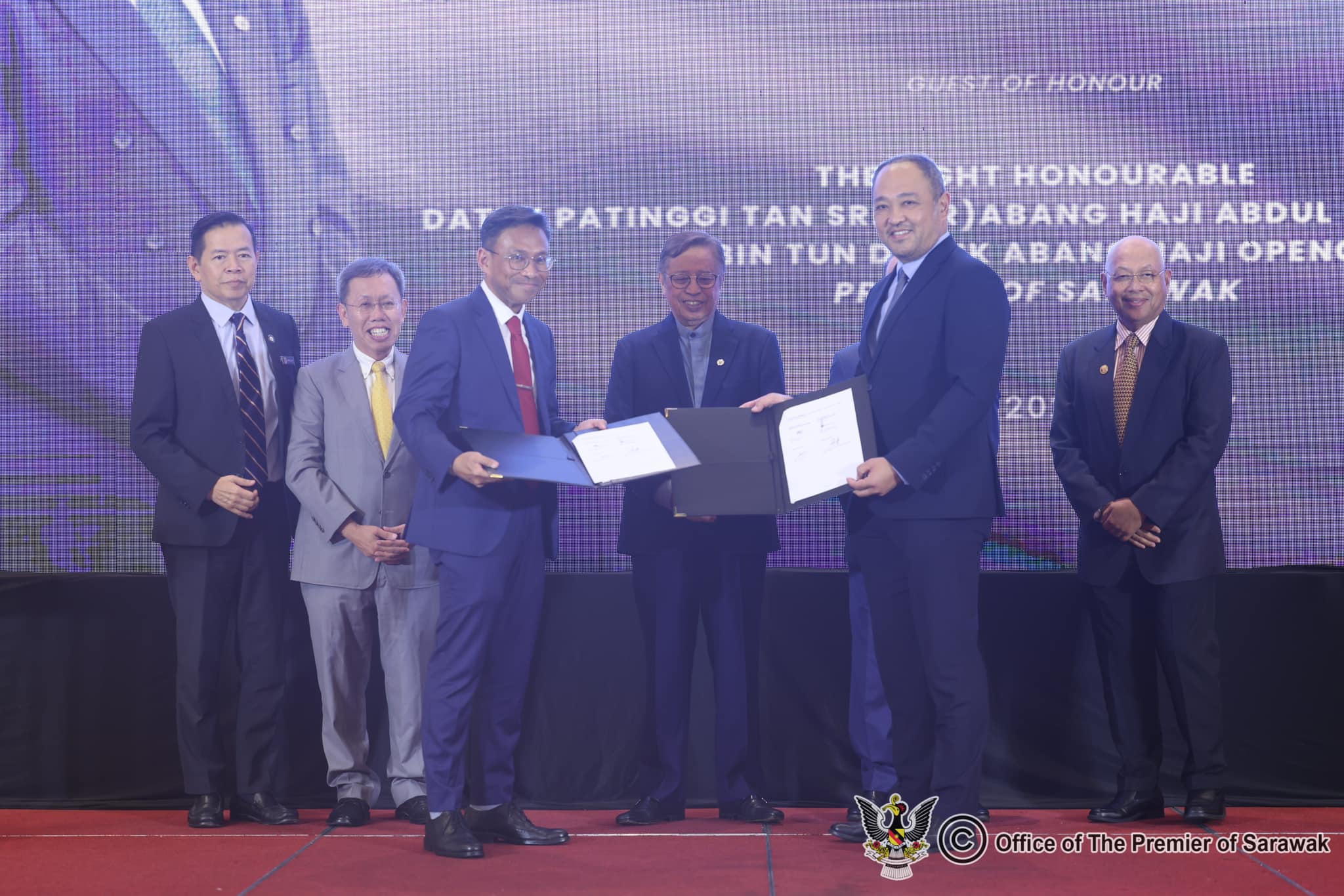JUN 2024
Kuching To Get State-Of-The-Art International Airport

KUCHING, 7 June – The new Kuching International Airport (KIA) will feature an architectural design inspired by Doha International Airport in Qatar, according to Premier of Sarawak, Datuk Patinggi Tan Sri Abang Johari Tun Openg.
“This proposal is part of a long-term plan to transform Kuching into a major hub in Southeast Asia, capable of handling approximately 15 million visitors in the future,” Abang Johari revealed.
“What we need is an international standard airport with the latest facilities, including state-of-the-art Information Technology (IT),” he said.
“This will serve as a catalyst to boost our economic growth, particularly in connectivity, tourism, and economic institutions.”
He made these remarks during officiating the signing ceremony of a Memorandum of Understanding (MoU) between Innocement Sdn Bhd and PMW Industries Sdn Bhd at Asajaya Hall, Grand Margherita Hotel on Friday.
Abang Johari also explained the government's decision to build a large airport now, considering future cost implications.
“If we wait five or ten years, the cost may be higher. And if we build an ordinary airport, people won't want to come,” he stated.
He expressed optimism that the new KIA would become a significant tourist attraction and facilitate smoother travel for visitors.
“If we have a sophisticated airport, people will come not just to see orangutans but to see the airport as well,” he added.
When asked about the timeline for the implementation and construction of the new KIA, Abang Johari mentioned that the Sarawak government requires three years for research and planning before construction begins.
“We are currently in the process of appointing experts involved in the airport planning based on Doha’s model,” he noted.
In another development, Abang Johari proposed the construction of elevated roads as a better alternative to 'carpet' roads for building on peat soil.
He highlighted the poor road conditions between Asajaya and Samarahan, pointing out that roads built over peat soil like carpets have proven unsuitable.
“I have asked the JKR (Public Works Department) to research building elevated roads on peat soil. If the road is elevated, it will not be uneven,” he said.
With elevated roads, the peat soil can be used as a carbon storage method since it remains undisturbed, he added. He also noted that with peat soil carbon storage, Sarawak can claim carbon credits, which will become a component of the region's carbon trading.
“The late Governor Tun Pehin Sri Abdul Taib Mahmud tried the 'carpet' approach, layering the road on top of peat soil, but it didn’t work. So, in my opinion, we might as well go for the elevated road,” he said.
Abang Johari emphasized that elevated roads would allow undisturbed peat soil to serve as carbon storage, advancing Sarawak's green economy initiatives.